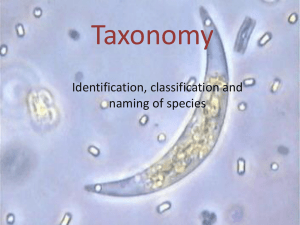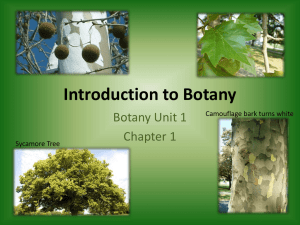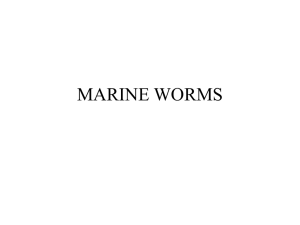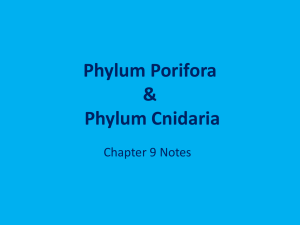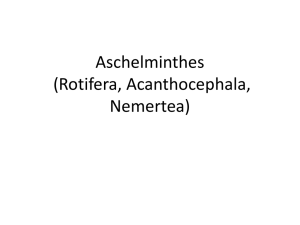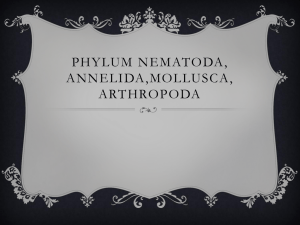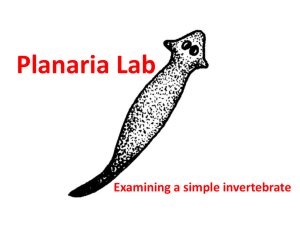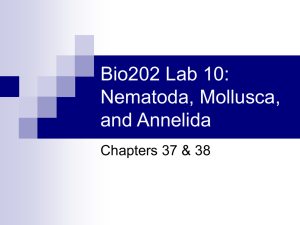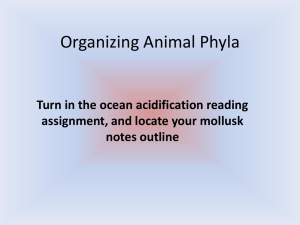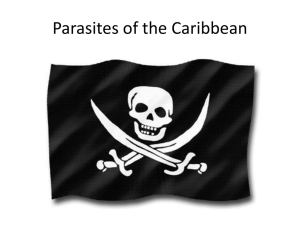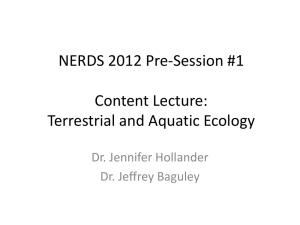Major Phyla Adaptaions & Life Cycles
advertisement
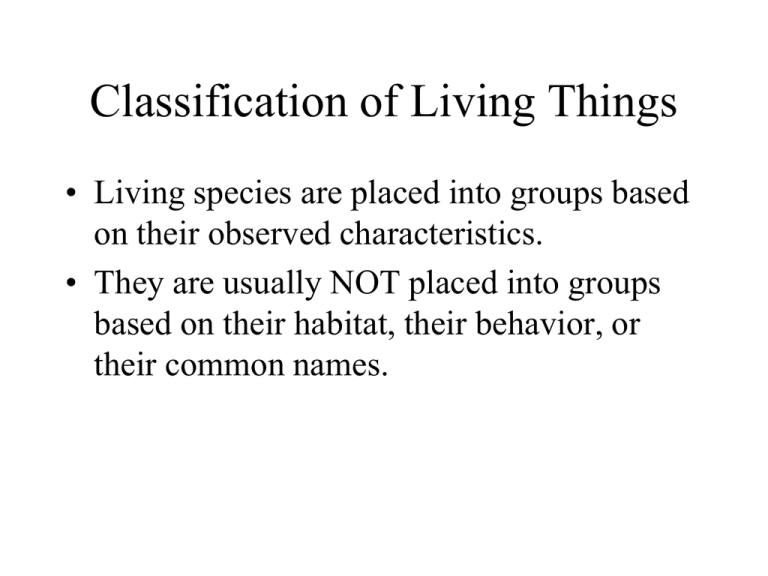
Classification of Living Things • Living species are placed into groups based on their observed characteristics. • They are usually NOT placed into groups based on their habitat, their behavior, or their common names. 6 Kingdoms of Living Things • • • • • • Archaebacteria Eubacteria Protista Fungi Plantae Animalia Bacteria are classified by SHAPE and BIOCHEMICALS Protista are classified by cell structures like cilia and flagella Fungi are classified by how they make SPORES Life Cycle Plants are classified by VASCULAR tissue & REPRODUCTIVE structures Life Cycle MOSS (and relatives) has NO vascular tissue. All other plant groups DO have vascular tissue Ferns reproduce with SPORES, not seeds Life Cycle Conifers have seeds in CONES CONES are male or female Life Cycle ANGIOSPERMS are flowering plants Life Cycle Flowering plants can be MONOCOTS or DICOTS A COTYLEDON is a seed part Animal Phyla • Porifera (sponges) • Cnidaria (jellyfish) • • • • • • • Platyhelminthes (flatworms) Nematoda (roundworms) Annelida (segmentedworms) Mollusca (snails, clams, squid) Arthropoda (insects, crabs) Echinodermata (starfish) Chordata (vertebrates) Phylum Porifera: the Sponges Phylum Spongebobius: Porifera are heterotrophic cells that group together Phylum Cnidaria: all members have stinging cells and one body opening Sponge Bob walking his jellyfish Phylum Cnidaria: corals and jellyfish Phylum Platyhelminthes….the flatworms They all have one body opening and a HEAD (CEPHALIZATION) Phylum Nematoda: the roundworms All members of this group have TWO body openings Phylum Annelida: the segmented worms Phylum Mollusca: All have a MANTLE which can produce “shell” Phylum Arthropoda: All have an exoskeleton made of protein Phylum Echinodermata: Starfish and relatives All have spiny skin and TUBE FEET Phylum Chordata All have: Dorsal nerve cord Pharyngeal gill structures MOST have a backbone (vertebrae) Phylum Chordata with no backbone Phylum Chordata: Class Chondrichthyes Phylum Chordata: Class Osteichthyes Phylum Chordata, Class Amphibia Phylum Chordata, Class Reptilia Phylum Chordata, Class Reptilia Phylum Chordata, Class Aves How did this happen? • Write a story that explains these observations: • DDT is an insect poison invented in 1941. When it was sprayed on mosquitoes in Savannah in 1942, 99% of mosquitoes died. • When DDT was sprayed in Savannah in 1966, only 61% of the mosquitoes died. • DDT is no longer used to control mosquitoes in Savannah

